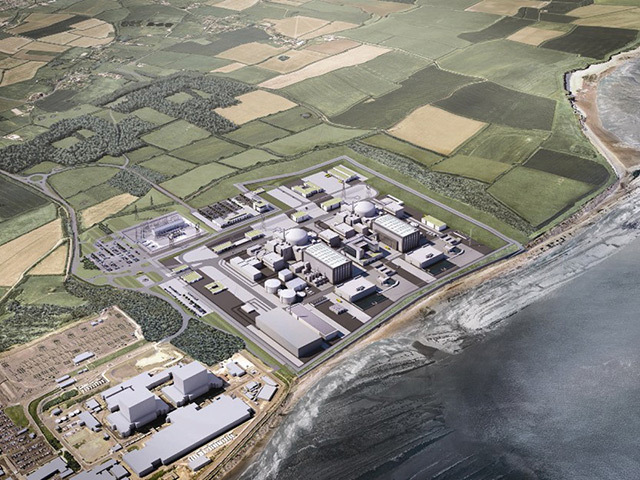
The Government’s energy policies are coming under increasing criticism after the chief financial officer of power giant EDF resigned, casting fresh speculation over its plans to build a new nuclear power station at Hinkley.
Thomas Piquemal is believed to have stepped down because of concerns that a final decision on investment for the £18 billion project in Somerset was being made too soon, potentially threatening EDF’s financial position.
Here are some of the key events of the Hinkley Point C development so far:
:: May 2006 – Former PM Tony Blair announces that a new generation of nuclear power stations is back on the agenda.
:: July 2006 – The government gives the green light to new nuclear power plants, with former trade and industry secretary, Alistair Darling, in light of the energy review findings, telling the Commons that nuclear power would make a “significant contribution” to cutting carbon emissions.
:: February 2007 – EDF boss Vincent de Rivaz promises Britain would be cooking Christmas turkeys on new nuclear power by 2017.
:: September 2008 – British Energy, which owned the existing power plants in the UK, is bought out by EDF for £12.5 billion, who reveal plans to build four new reactors in the UK.
:: October 2008 – A public consultation with residents that neighbour the Hinkley site begin on the proposals.
:: May 2009 – Energy company Centrica backs nuclear by taking a 20% stake in EDF’s project to build reactors in the UK.
:: October 2011 – An application to build the new nuclear power station is received by the planning inspectorate.
:: February 2012 – Initial prep work begins at the Somerset site.
:: March 2012 – Anti-nuclear protesters complete a 24-hour blockade of the entrance to Hinkley Point nuclear power station to mark the first anniversary of the disaster at the Fukushima power station in Japan – with 1,000 demonstrators surround the site.
:: November 2012 – The first new site licence for a UK nuclear power station in 25 years is granted to EDF’s planned Hinkley Point plant.
:: February 2013 – Centrica pulls out of plans to build a new nuclear power stations in Britain. The company said the anticipated project costs had increased and the construction timetable had extended by a number of years.
:: March 2013 – The Environment Agency grants the three main environmental permits required for operating the planned nuclear power station.
:: March 2013 – Former energy secretary Ed Davey gives go ahead to the new nuclear power plant.
:: October 2013 – The Government agrees £92.50 per megawatt-hour will be paid for electricity produced at the Somerset site – around double the current market rate at the time.
:: March 2013 – The European Commission opens an “in-depth investigation” to examine whether UK support for a new nuclear power station breaks state aid rules.
:: March 2014 – The United Nations accuses the UK Government of suspicious actions over plans to develop its first nuclear power station in a generation.
Environmental inspectors warned there are concerns about a lack of talks with neighbouring countries, including Ireland, over potential risks posed by the Hinkley Point C plant on the Bristol Channel.
:: May 2014 – The second phase of construction work begins at the site.
:: October 2014 – The European Commission gives the final go-ahead for the £16 billion project.
:: February 2015 – The March deadline on a final investment decision is abandoned by EDF.
:: July 2015 – EDF names a number of national and local Somerset companies or joint ventures as preferred bidders set to win contracts worth more than £1.3 billion to build Hinkley Point C.
The firms include engineering giants Balfour Beatty, Doosan Babcock, Laing O’Rourke and Weir, and companies close to the Somerset site such as food producers Somerset Larder and bus organisation Somerset Passenger Solutions
:: September 2015 – Chancellor George Osborne approves an initial Government guarantee worth £2 billion for the proposed plant in Somerset and EDF group chief executive, Jean-Bernard Levy, announces that the 2023 first power date will not be met.
:: October 2015 – EDF signs an investment agreement with the China General Nuclear Power Corporation (CGN) to build the new plant at Hinkley Point.
:: January 2016 – EDF delays its final investment decision again – it is understood the company is looking for new investment partners and has struggled to raise the cash for its 66.5% stake in the project.
:: March 2016 – Chief financial officer for EDF Thomas Piquemal resigns ahead of a final investment decision on the power plant, amid fears the project could be jeopardised over the company’s financial position.
Recommended for you
